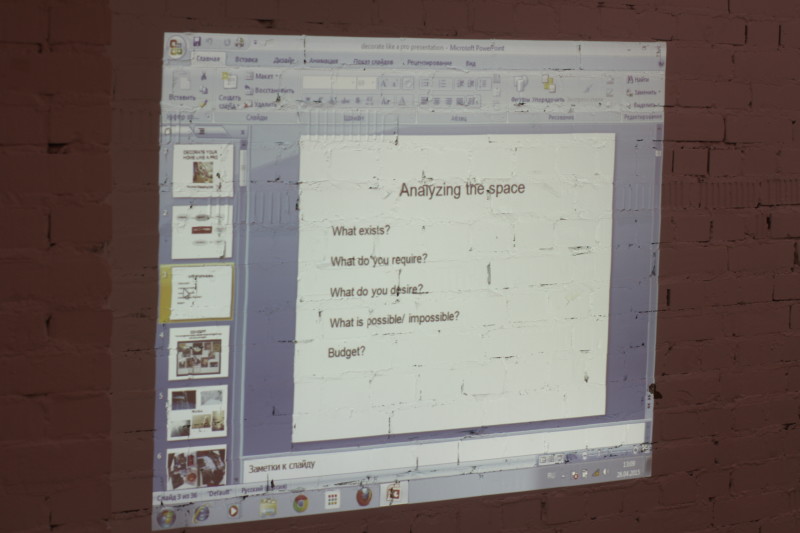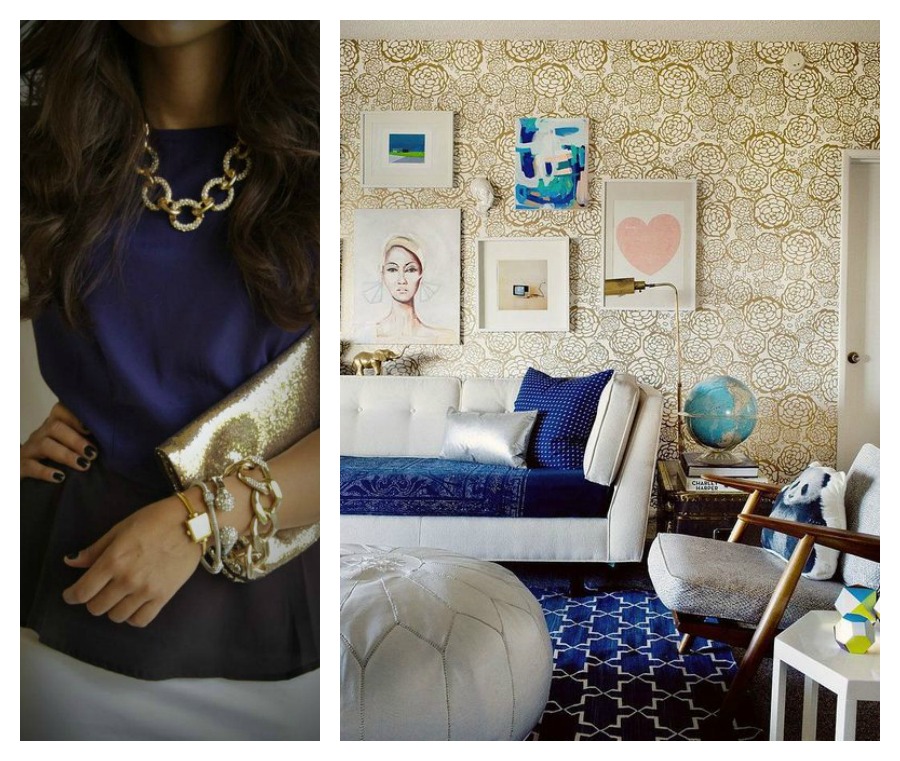How to Organize Your Own Interior Design Workshop
Good morning, good afternoon or good evening (depending on which side of the globe you are on). It’s been a while I didn’t post and this was for a reason – last week was really intense but at the same time exciting.
On Sunday I have organized my Interior Design Workshop called “Decorate Your Home like a Pro”. It is a part of “The Interior Decorating Cafe” series and to be honest I was very nervous about how the first one will run. It turned out to be successful as all the participants have signed up already for the next one, so I thought it might be a good idea to share my experience and also several tips on how to organize it.
First of all, I think, that if you are in Interior design business, it is a great way to promote your work, gain new clients and establish yourself as an expert in the field. Here are the steps of organizing an interior design workshop.
1) First thing you need to do is defining your niche – answer the question for whom you are going to organize it? My target audience was the following: “Expats living in Moscow, not professional interior designers but people of different professions who have genuine interest in interior design. Age: 25-45 y.o. (The idea is that usually the foreigners living in Moscow (especially housewives) don’t have many activities to attend, because most of events organized here are in Russian).
2) Set your goals – what are you trying to achieve with your workshop? Do you want to do it mainly for advertising your work as interior designer or do you want to make it a part time income? For example, my goals were:
- Establish the reputation and showcase my works
- Gain new clients (supposedly people who have attended the workshop will hire me for consultations or designing their homes in the future).
- Earn money
3) Set the date. Depending on your target audience define ideal day to conduct your workshop. Thus, for me it would be weekends (Saturdays in particular) – people are relaxed, want to go out and also learn something new.
4) Decide on location. It should be a quite, private and easily accessible place. Think of the equipment and facilities you would require (e.g. tea/coffee set up, amount of seats, projector, etc.) and find the place that will have them.
5) Start to heavily promote. How people will find out about your workshop? Here is how I promoted mine:
– Printed out the flyers and took them with me on all events, which my target clients would attend. This included: gatherings of International Women Clubs in Moscow, Internations Club activities, another workshops and exhibitions.
– Invited friends: when I said to my friends that I am going to organize workshops, many of them expressed an interest to attend.
– Promoted on Facebook groups – again you need to choose those, which your target attendees would visit. Like I posted announcements on such groups as “Expats in Moscow”, “Moscow for foreigners”, “100 things to do in Moscow” etc. This was, perhaps, the most successful marketing campaign for me.
– Promoted on other Social media and my blog.
6) Preparation is the key.
I have prepared my presentation at least 2 weeks before the workshop and have done at least 5 rehearsals in front of mirror (yes, yes – it is time to remember the school time). My materials were printed on the quality paper, I have spent around 5 hours cutting out the furniture templates, I went to the store to get some actual paint chips and I have bought all necessary stationary like paper, pencils, pens and rulers.
How to make your workshop successful
Tip #1 – Make it interactive.
Forget about boring PowerPoint presentation with bullet points and huge paragraphs of information. Interior design is a fun and creative journey – so make it creative for your participants as well! My presentation only included diagrams, examples of interiors (both ugly and beautiful to show audience design mistakes and design success). I have prepared simple plans and furniture templates, so that people can try to create their own layouts, understanding the principles and basic considerations on how to make them.
Tip # 2 – Engage your audience.
Start discussions, ask people questions, make them think, smile, wonder!
Tip #3 – Be a problem solver.
Mostly people are interested to know about solving their own decorating problems. I asked my participants to bring the photos of their homes, so that they can ask questions and we can discuss how to solve their challenges.
Tip #4 – Show actual examples of your work
If you include in the workshop examples of your own designs, people are more likely to perceive you as an expert in the field.
Tip #5 – Include the information, they wouldn’t know or find elsewhere
There are numerous interior design resources, including various magazines, blogs, websites. If you workshop would include the information, that people can find elsewhere, they won’t see the point why they should spend money on it. Think about theory you studied in design school or something that you have learned from your own experience – your audience will really appreciate and be excited about learning something they didn’t know.
Tip # 6 – Make it personal
If you are able to become not only a tutor but a friend it is part of the deal to make your workshop successful. Friendly, informal atmosphere is the key. People will come not only to learn something but for fun and socializing.
Tip #7 – Be yourself
Don’t try to copy anyone, develop your own personal style and approach. People like authenticity and genuinity, they will immediately notice if you perform unnaturally.
Tip #8 – Invite a professional photographer
Beautiful photos of your workshop is an excellent opportunity to promote it – consider this and make this little investment that will eventually pay off.
Photography: Roman Bychenkov
Organizing workshop is only one of the effective marketing tools that you can use for your interior design business for acquiring new clients. In my book “Marketing for Interior Designers” I describe 22 more that you might find useful and effective:

















